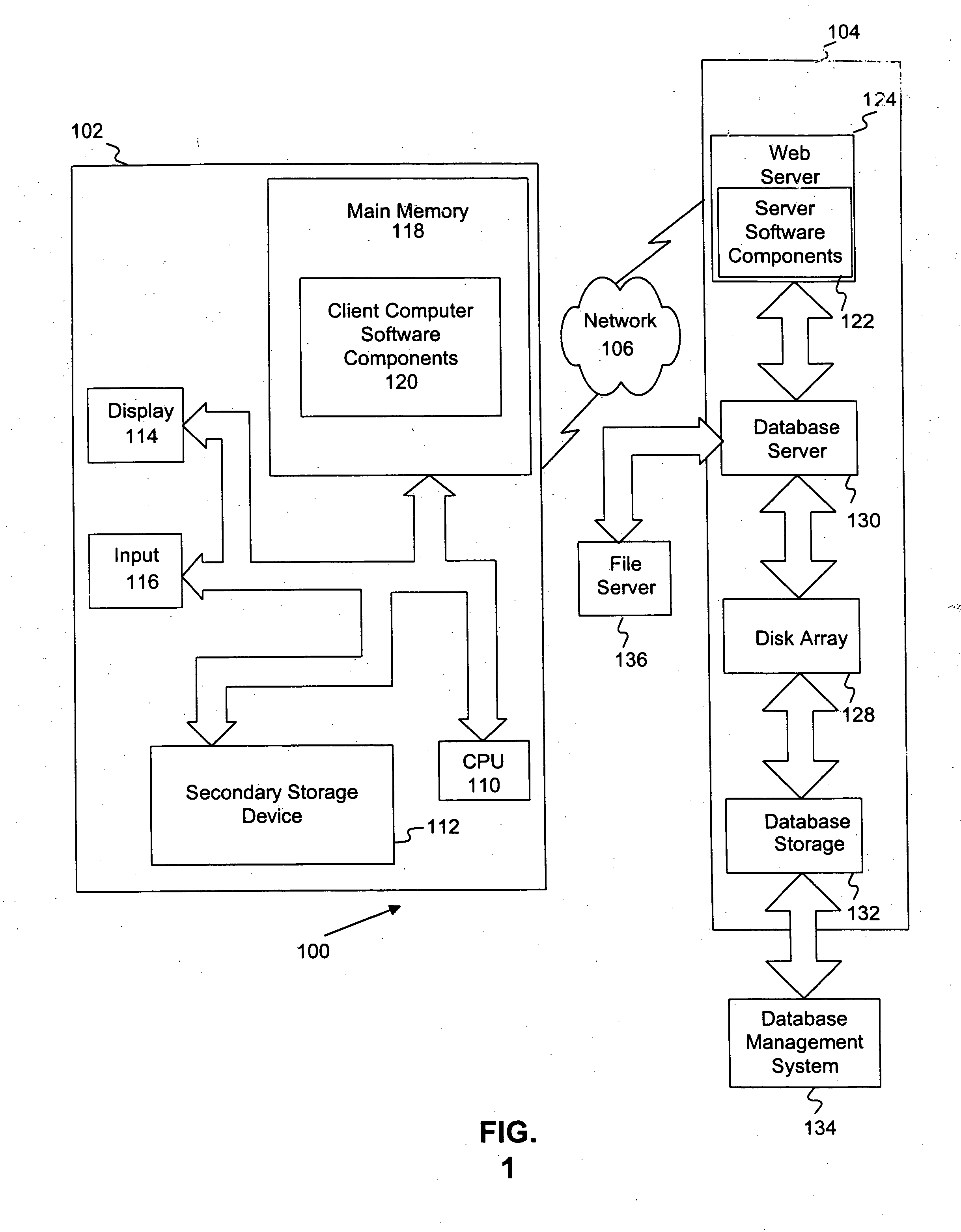RDL search engine
a search engine and search technology, applied in the field of search management system, can solve the problems of not being able to perform select queries such as database management system can perform, performing queries directly over the web, and limited to special types of queries
- Summary
- Abstract
- Description
- Claims
- Application Information
AI Technical Summary
Benefits of technology
Problems solved by technology
Method used
Image
Examples
Embodiment Construction
Overview
[0047] Methods and systems consistent with the present invention provide a means for searching numerical data across networks such as the Internet, and removing the middle layer of query engines or servers used by conventional systems in retrieving data from relational databases over the Internet. The methods and systems in accordance with the present invention also provide a means for tying millions of computers together into a single database, thereby a query introduced to the system returns a table of data as a single database is capable of providing.
[0048] Furthermore, the methods and systems consistent with the present invention provide the means for performing navigational, line item (or record-level), semantic, numerical, transformational, arithmetic, time-dependent, and cost based queries on numerical data. In addition, a user may also conduct select queries between unrelated databases. During the various queries, methods and systems consistent with the present in...
PUM
 Login to View More
Login to View More Abstract
Description
Claims
Application Information
 Login to View More
Login to View More - R&D
- Intellectual Property
- Life Sciences
- Materials
- Tech Scout
- Unparalleled Data Quality
- Higher Quality Content
- 60% Fewer Hallucinations
Browse by: Latest US Patents, China's latest patents, Technical Efficacy Thesaurus, Application Domain, Technology Topic, Popular Technical Reports.
© 2025 PatSnap. All rights reserved.Legal|Privacy policy|Modern Slavery Act Transparency Statement|Sitemap|About US| Contact US: help@patsnap.com



